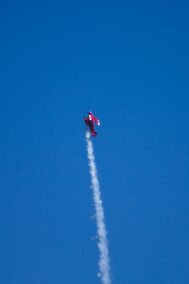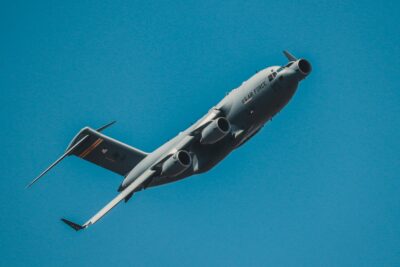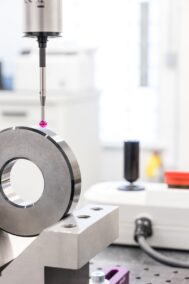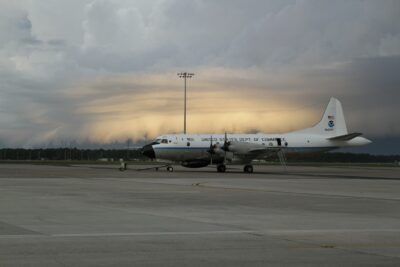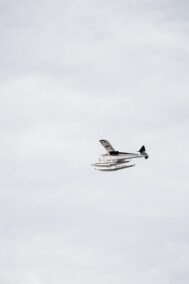Exploring Innovative Concepts in Aerodynamic Research
Advancing Efficiency through Distributed Electric Propulsion
Aerodynamic research in aviation is at the forefront of innovation, driving advancements that promise to revolutionize the efficiency and performance of aircraft. One such pioneering concept is distributed electric propulsion (DEP), which involves distributing multiple electric motors across the airframe to provide thrust. By harnessing electric propulsion, aircraft can achieve higher levels of efficiency and environmental sustainability compared to traditional propulsion systems. This technology holds great promise for the future of aviation, offering a pathway towards cleaner, quieter, and more efficient flight.
In the dynamic landscapes of Saudi Arabia and the UAE, where ambition meets innovation, the adoption of DEP technology is gaining momentum. These nations recognize the importance of investing in sustainable aviation solutions to support their growing economies while mitigating environmental impact. By embracing distributed electric propulsion, airlines in Riyadh, Dubai, and beyond can reduce their carbon footprint and lead the global transition towards greener aviation. Moreover, DEP technology opens up new possibilities for urban air mobility and regional connectivity, aligning with the ambitious visions of Saudi Arabia’s Vision 2030 and Dubai’s smart city initiatives.
Optimizing Performance with Boundary Layer Ingestion
Another groundbreaking concept in aerodynamic research is boundary layer ingestion (BLI), which seeks to improve aircraft efficiency by ingesting the boundary layer airflow that forms along the fuselage. By capturing and re-energizing this airflow, BLI technology can reduce aerodynamic drag and fuel consumption, leading to significant performance gains. This innovative approach has the potential to reshape the design of future aircraft, making them more aerodynamically efficient and environmentally friendly.
In the competitive aviation market, where every efficiency gain translates into a competitive advantage, boundary layer ingestion holds immense promise. Airlines in Saudi Arabia and the UAE are closely monitoring developments in BLI technology, recognizing its potential to enhance their operational efficiency and reduce operating costs. By partnering with leading aerospace manufacturers and research institutions, these nations can play a pivotal role in shaping the future of aerodynamic research and ushering in a new era of sustainable aviation.
Furthermore, the integration of boundary layer ingestion technology aligns with broader efforts to modernize and optimize air transportation systems. In Saudi Arabia, where the aviation sector is a key driver of economic growth, investments in BLI research can yield significant long-term benefits. Similarly, in the innovative ecosystem of Dubai, where bold ideas are transformed into reality, boundary layer ingestion represents a pathway towards achieving the city’s ambitious goals of sustainable urban mobility and connectivity.
Leadership and Collaboration in Aerodynamic Innovation
Effective leadership and collaboration are essential for driving progress in aerodynamic research and implementing innovative technologies in aviation. Business executives, mid-level managers, and entrepreneurs in Saudi Arabia and the UAE must foster a culture of innovation within their organizations, encouraging collaboration across disciplines and embracing emerging technologies. By investing in talent development and supporting research initiatives, companies can position themselves as leaders in the rapidly evolving field of aerodynamic innovation.
Moreover, strategic partnerships between government agencies, academia, and industry stakeholders are crucial for advancing aerodynamic research and accelerating technology adoption. By leveraging each other’s strengths and resources, stakeholders in Saudi Arabia and the UAE can drive collective progress towards a more sustainable and efficient aviation ecosystem. This collaborative approach is essential for overcoming complex challenges and realizing the full potential of aerodynamic innovations.
In conclusion, aerodynamic research in aviation is unlocking new possibilities for efficiency and performance, driven by concepts such as distributed electric propulsion and boundary layer ingestion. In Saudi Arabia, the UAE, and beyond, stakeholders are embracing these innovations to create a more sustainable and competitive aviation industry. By fostering leadership, collaboration, and innovation, these nations can lead the way towards a future where aviation is cleaner, quieter, and more efficient than ever before.
Conclusion: Shaping the Future of Flight
In conclusion, aerodynamic research in aviation is propelling the industry towards a future of unprecedented efficiency and performance. Through the exploration of innovative concepts such as distributed electric propulsion and boundary layer ingestion, stakeholders in Saudi Arabia, the UAE, and beyond are pioneering the next generation of aircraft technology. By embracing collaboration, leadership, and innovation, these nations can shape the future of flight and pave the way for a more sustainable and interconnected world.
#aerodynamicresearch #aviation #distributedelectricpropulsion #boundarylayeringestion #efficiency #performance #SaudiArabia #UAE #Riyadh #Dubai #leadership #innovation






